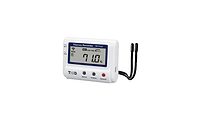Manage food safety data
Use data analytics to drive decision-making and continuous improvement.

The data age is here to stay, and we know dairy companies that don’t take advantage of it will be less successful than those that do in this highly competitive — and often volatile — market environment. Being able to collect data from a variety of sources — and cross-connect data between departments such as sales and marketing, procurement, operations, quality assurance and sanitation — is becoming increasingly necessary, not only for economic sustainability, but also for regulatory compliance purposes.
While data analytics are needed across many areas of a company, this article will focus on food safety data, given that compliance with the Food Safety Modernization Act is top of mind across the dairy industry.
Collecting food safety data
With concerns about food traceability and the benefits of blockchain technology in the daily headlines, the food industry, as well as regulatory agencies, is under increasing pressure to continually improve trace-forward and trace-back capabilities when food or ingredients need to be recalled and to identify sources of foodborne disease outbreaks. Both the FDA and the Centers for Disease Control and Prevention have moved to using whole genome sequencing to help pinpoint sources of illness and contamination.
Furthermore, FDA’s Hazard Analysis and Risk-based Preventive Controls for Human Foods regulation requires comprehensive recordkeeping related to validation, monitoring and verification of preventive controls. Corrective actions need to be taken when issues arise.
The dairy industry is also collecting its own food safety data and must implement ways to fully leverage the information to help inform decision-making and drive continuous improvement. Companies need not only the means to gather the information, but also the know-how to analyze it, which points to the need to have the right people with the right training.
Food safety data management
Food safety data are collected from multiple sources in a manufacturing plant — from inline sensors for pH, temperature and composition to inline equipment such as metal detectors. Laboratory testing and evaluation are also important sources of food safety data — including pH, microbial load (environmental and possibly finished-product pathogen testing), allergen residues and labeling compliance. The challenge comes in managing these data to be useful in operating a successful business.
Tracking and analysis of food safety data are required for facilities to recognize trends and drive corrections to keep the process in control. These steps can be done with simple spreadsheets or complex data management systems.
Manual or automated data entry directly into laboratory information systems can facilitate real-time reporting. Statistical process-control charting can provide a quick visual check for employees demonstrating systems are in control (or not). The key is to promptly communicate data trends to appropriate personnel and train employees to take action as necessary. In addition, data must be secured and verified by trained individuals to ensure accuracy.
It is critical for facilities to recognize the need to provide accurate records of food safety monitoring activities upon request from regulatory agencies. Food safety monitoring data are essential for product release and traceability. Data provided should be focused on food safety, not on quality parameters, and must be easily associated with specific lots of product. When test results are out of specification, clear and complete corrective action records must be maintained.
Positive returns on investment will be realized when your facility is under tighter control, efficiencies are created and small problems are identified before they become much bigger issues.
Looking for a reprint of this article?
From high-res PDFs to custom plaques, order your copy today!




